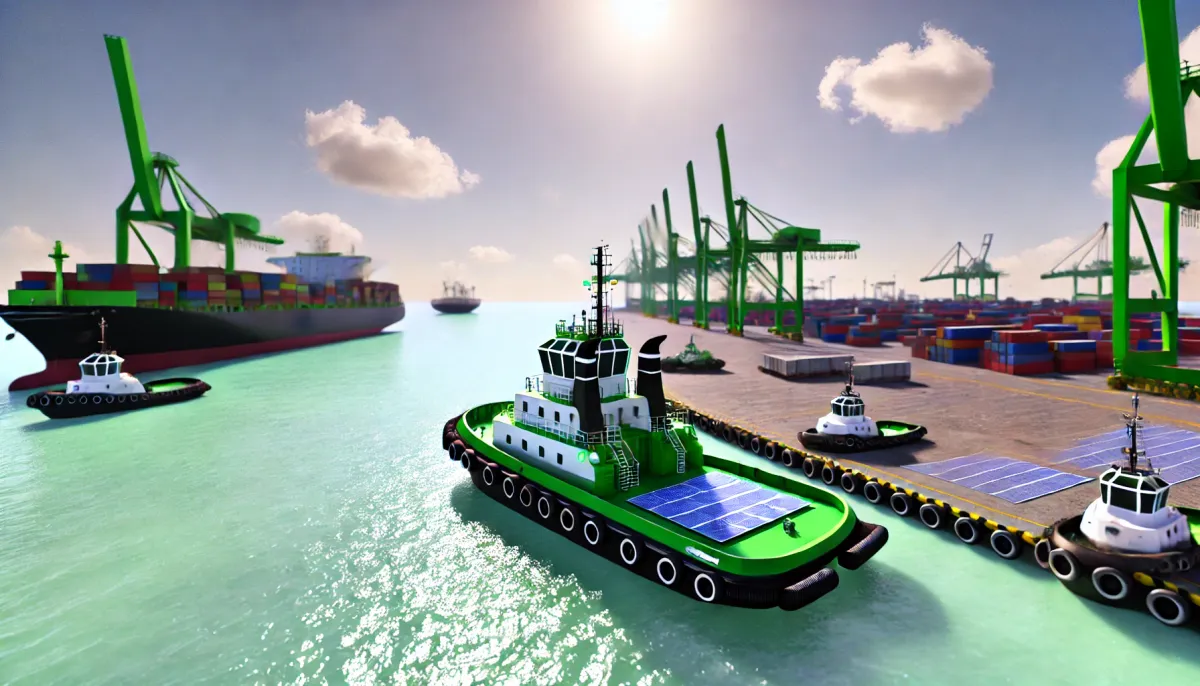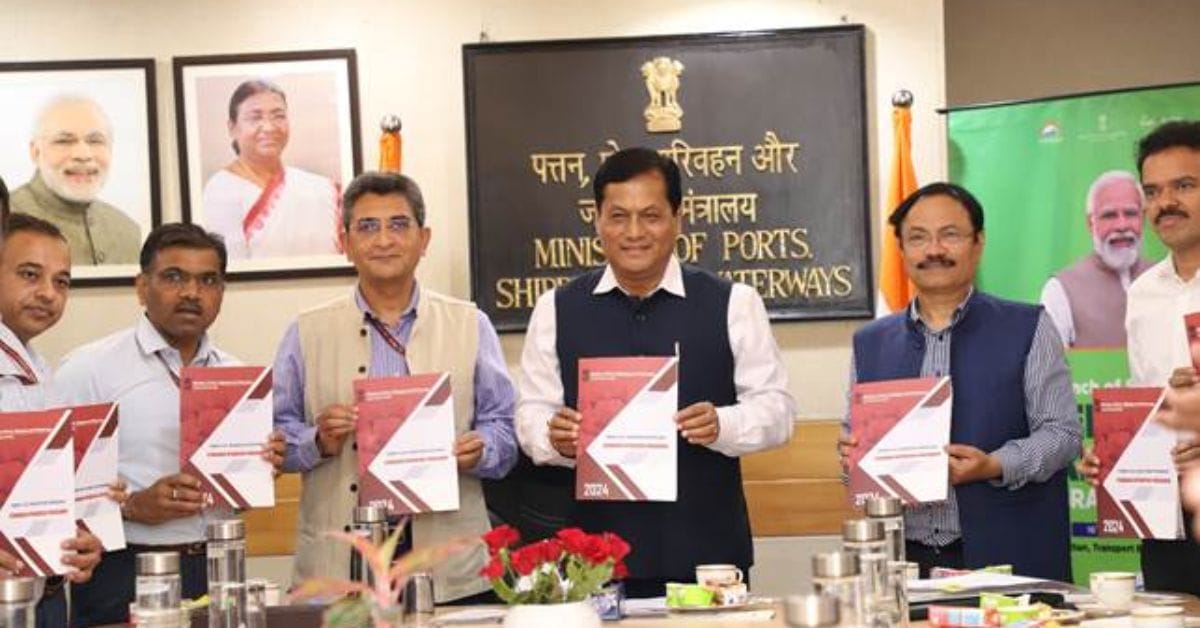India's $120 Million Green Tug Transition Program: Pioneering Maritime Sustainability and Environmental Stewardship

India is embarking on a transformative journey in its maritime sector with the launch of the Green Tug Transition Program (GTTP), a pioneering initiative aimed at reducing the environmental impact of maritime operations by replacing traditional diesel-powered tugs with zero-emission alternatives.
This ambitious program, officially inaugurated by the Union Minister of Ports, Shipping, and Waterways, Shri Sarbananda Sonowal, is a testament to India's commitment to sustainable development and its leadership in the global fight against climate change.
The Genesis of the Green Tug Transition Program

The Green Tug Transition Program was first introduced by Shri Sonowal during the ‘Chintan Shivir’ event on May 22, 2023. This initiative is a critical component of the broader ‘Panch Karma Sankalp’ program, which is designed to accelerate India's transition towards greener, more sustainable maritime practices.
The program is strategically aligned with India’s national maritime policies, including the Maritime India Vision 2030 (MIV 2030) and the Maritime Amrit Kaal Vision 2047. These long-term strategic visions aim to revolutionize India’s maritime sector by integrating renewable energy sources, enhancing operational efficiency, and significantly reducing carbon emissions.
The GTTP is poised to play a crucial role in achieving these goals, particularly by contributing to the reduction of carbon emissions per ton of cargo by 30% by 2030.
Detailed Phased Implementation and Investment Strategy
The Green Tug Transition Program will be implemented in multiple phases, with the first phase scheduled to commence on October 1, 2024, and run through December 31, 2027. During this initial phase, four major Indian ports—Jawaharlal Nehru Port Authority, Deendayal Port Authority, Paradip Port Authority, and V.O.
The financial outlay for the first phase is projected to be approximately INR 1,000 crores (equivalent to $120 million). This substantial investment reflects the government's strong commitment to fostering a sustainable maritime infrastructure that not only reduces environmental impact but also supports economic growth.
The program is expected to generate significant economic benefits by stimulating the domestic tug industry, creating job opportunities in shipbuilding and design, and promoting innovation in green maritime technologies.
Technological Innovation and Future-Proofing the Maritime Sector
The initial fleet of green tugs under the GTTP will be powered by battery-electric systems, which represent the cutting edge of current green maritime technology. These battery-electric tugs are expected to deliver zero-emission operations, thereby drastically reducing the carbon footprint of port activities.
However, the program is designed to be flexible and adaptive, allowing for the integration of emerging green technologies as they become viable.
Future phases of the GTTP may incorporate hybrid systems, methanol-based fuels, and green hydrogen technologies, ensuring that the program remains at the forefront of global maritime innovation.
By setting a clear timeline and stringent standards, the GTTP aims to ensure that all tugs operating in major Indian ports transition to green technologies by the end of 2040. Moreover, from 2033 onwards, every new tug built in India for use in these ports must comply with the Advanced Sustainable Tug Design Standards (ASTDS) set forth by the GTTP.
This forward-looking approach not only future-proofs India’s maritime sector but also positions the country as a global leader in sustainable maritime practices.
Economic and Environmental Impact
The Green Tug Transition Program is expected to have a profound impact on both the economy and the environment. Environmentally, the widespread adoption of green tugs will lead to a significant reduction in greenhouse gas emissions, helping India to meet its international climate commitments under the Paris Agreement. The reduction in air and water pollution in port areas will also contribute to improved public health and the preservation of marine ecosystems.
This aligns with the government’s ‘Make in India’ initiative, which seeks to boost domestic manufacturing and innovation. The development of advanced green tugs will also provide Indian shipyards with a competitive edge in the global market, opening up new export opportunities and strengthening India’s position as a leader in sustainable maritime technologies.
Strategic Alignment with National and Global Goals
The GTTP’s strategic alignment with the Maritime India Vision 2030 (MIV 2030) and the Maritime Amrit Kaal Vision 2047 underscores the program’s importance in achieving India’s long-term sustainability goals. These visions outline ambitious targets, such as generating 60% of the power used by major ports from renewable energy sources by 2030, and achieving a 30% reduction in carbon emissions per ton of cargo handled.
The adoption of green technologies in harbor tugs is expected to be a key factor in reaching these targets, demonstrating India’s commitment to integrating environmental sustainability into its economic development plans.
On the global stage, India’s Green Tug Transition Program is likely to be seen as a model for other countries seeking to balance economic growth with environmental responsibility. By taking bold steps to decarbonize its maritime sector, India is not only addressing its domestic environmental challenges but also contributing to global efforts to combat climate change.
Conclusion: A Vision for the Future
The Green Tug Transition Program represents a bold and visionary step towards a sustainable future for India’s maritime sector. With substantial investment, a clear implementation roadmap, and a commitment to innovation and domestic manufacturing, the GTTP is set to transform the way maritime operations are conducted in India. By 2040, India’s ports will be serviced by a fleet of standardized, eco-friendly green tugs, marking a significant milestone in the country’s journey towards environmental sustainability.
As India continues to pursue its ambitious goals under the Maritime India Vision 2030 and beyond, the Green Tug Transition Program will undoubtedly play a central role in shaping the future of the nation’s maritime industry.
Through this program, India is not only enhancing its economic and environmental resilience but also setting a powerful example for the rest of the world on the importance of sustainable development in the maritime sector.